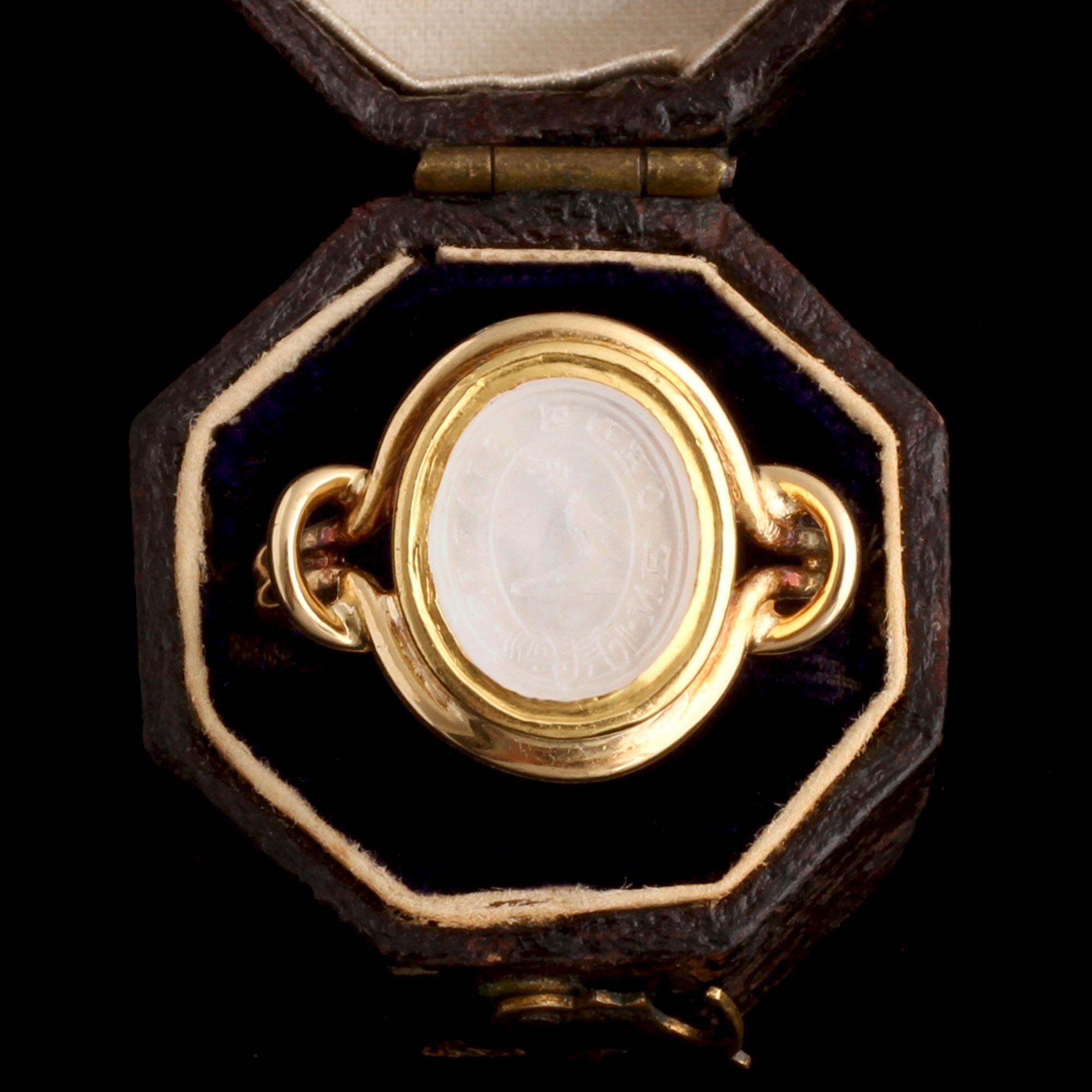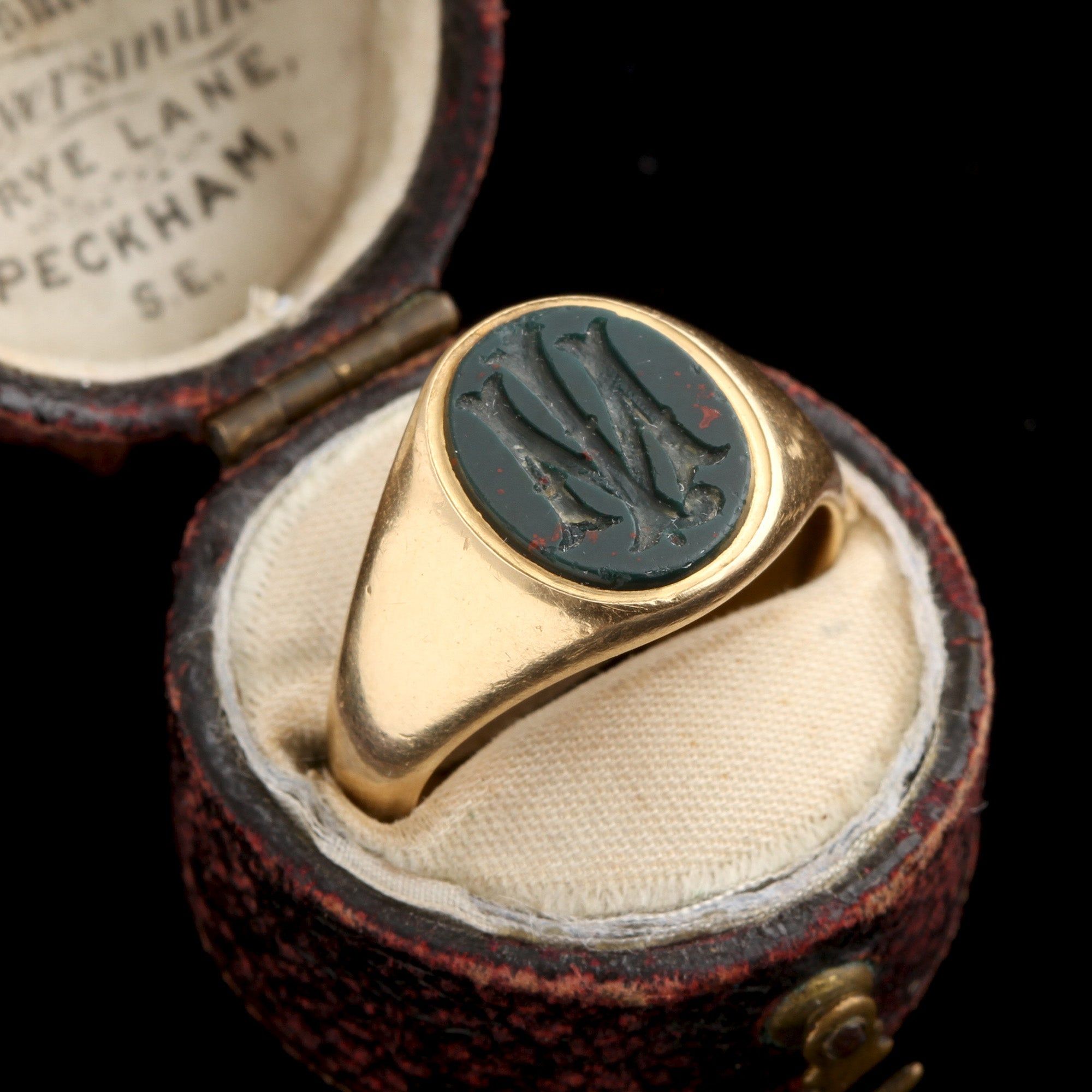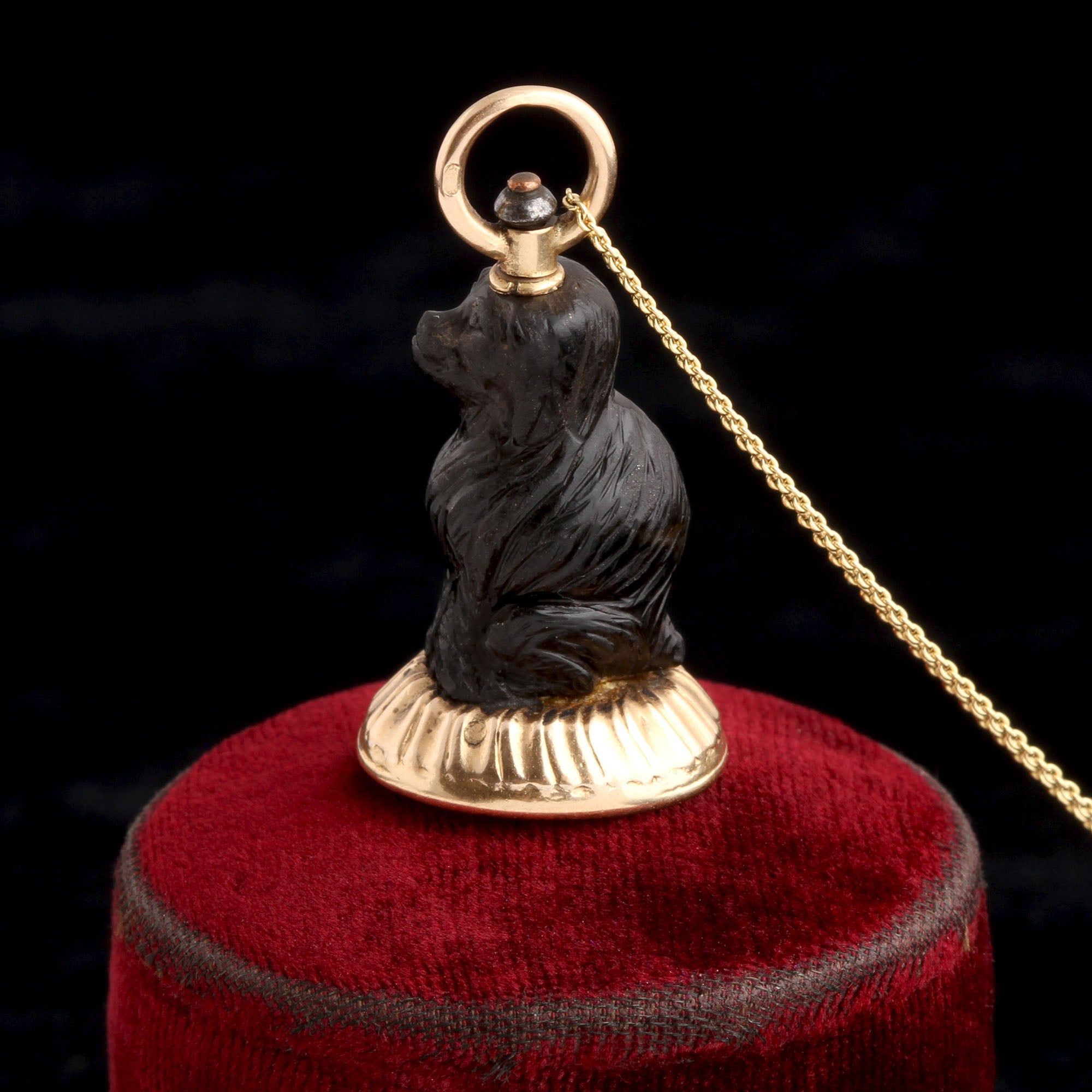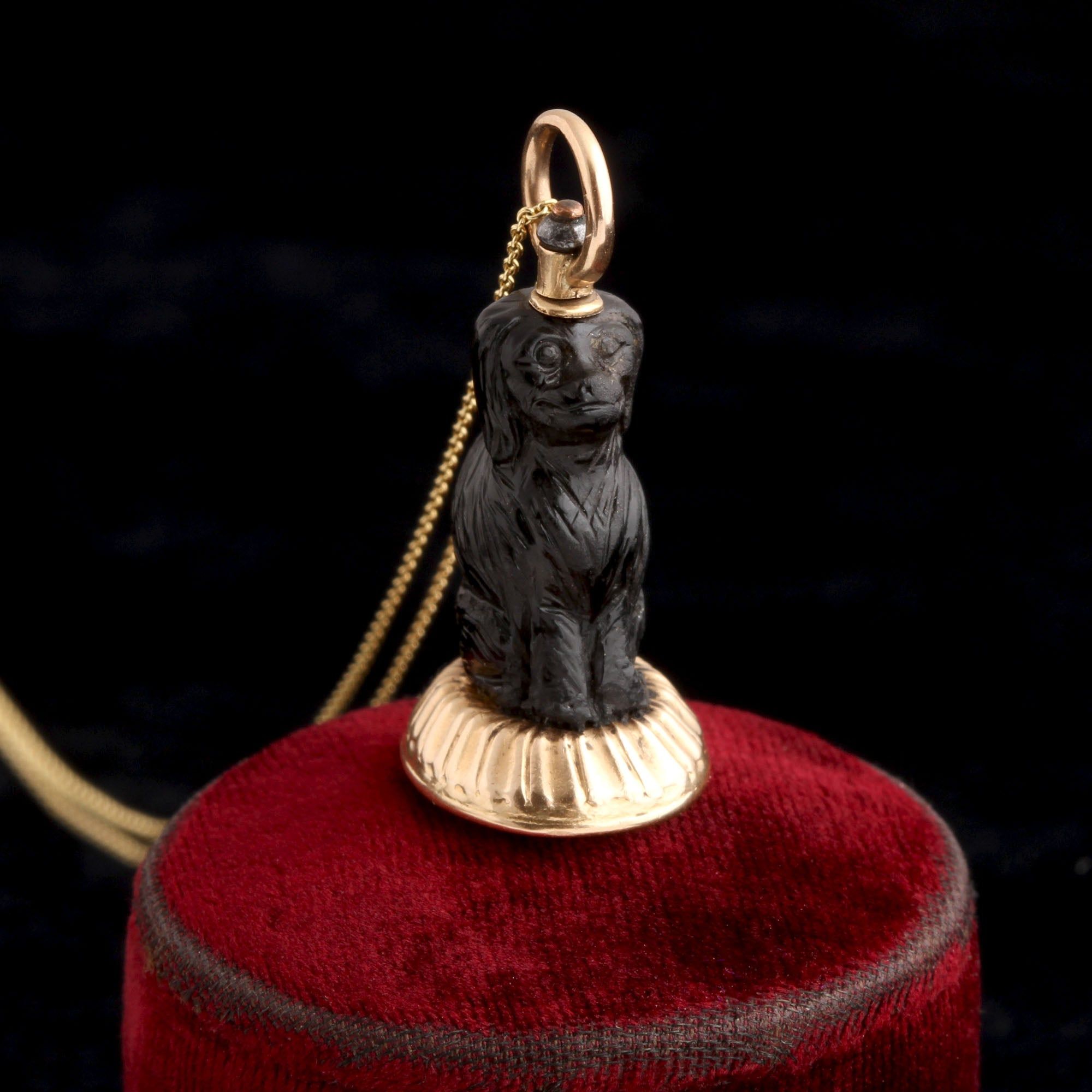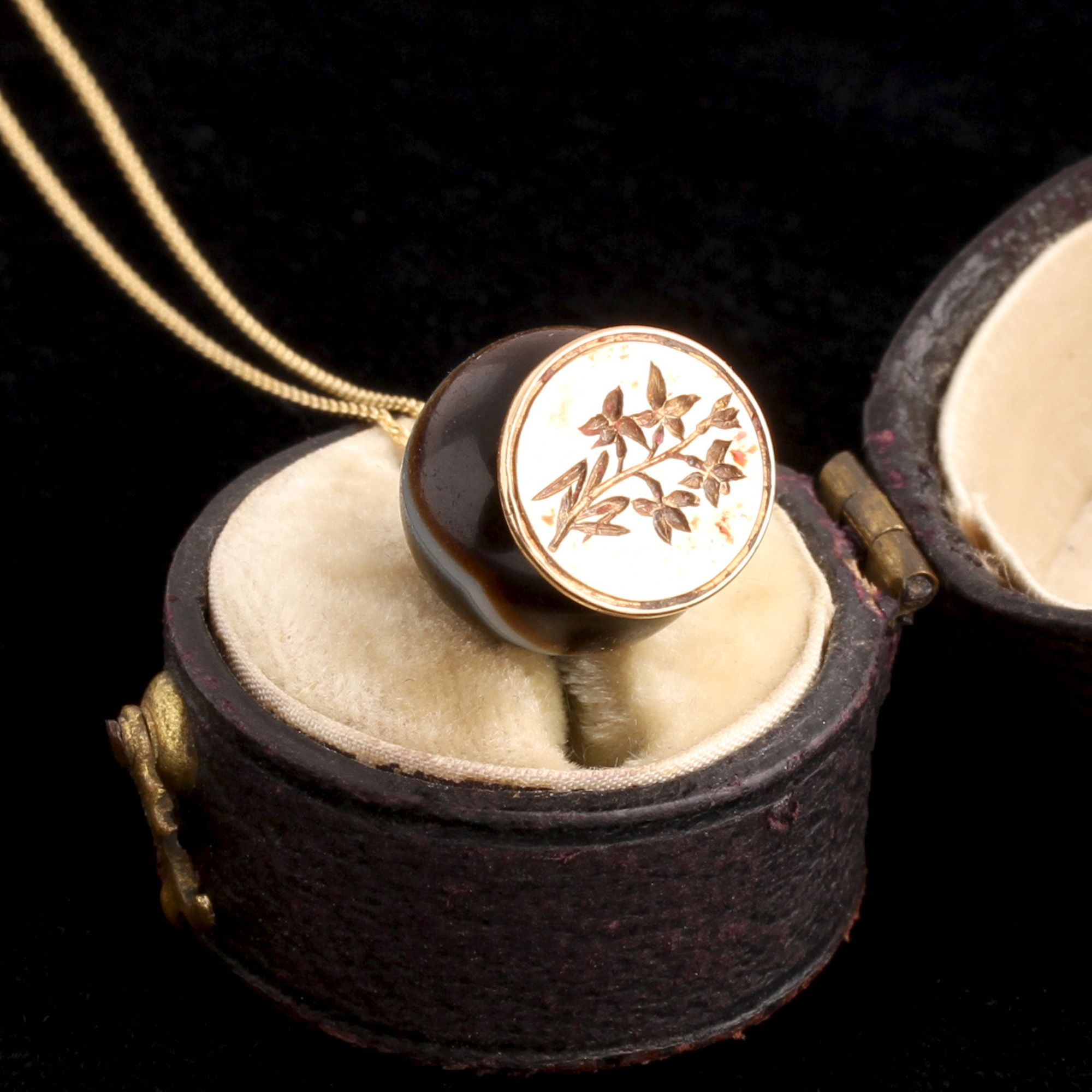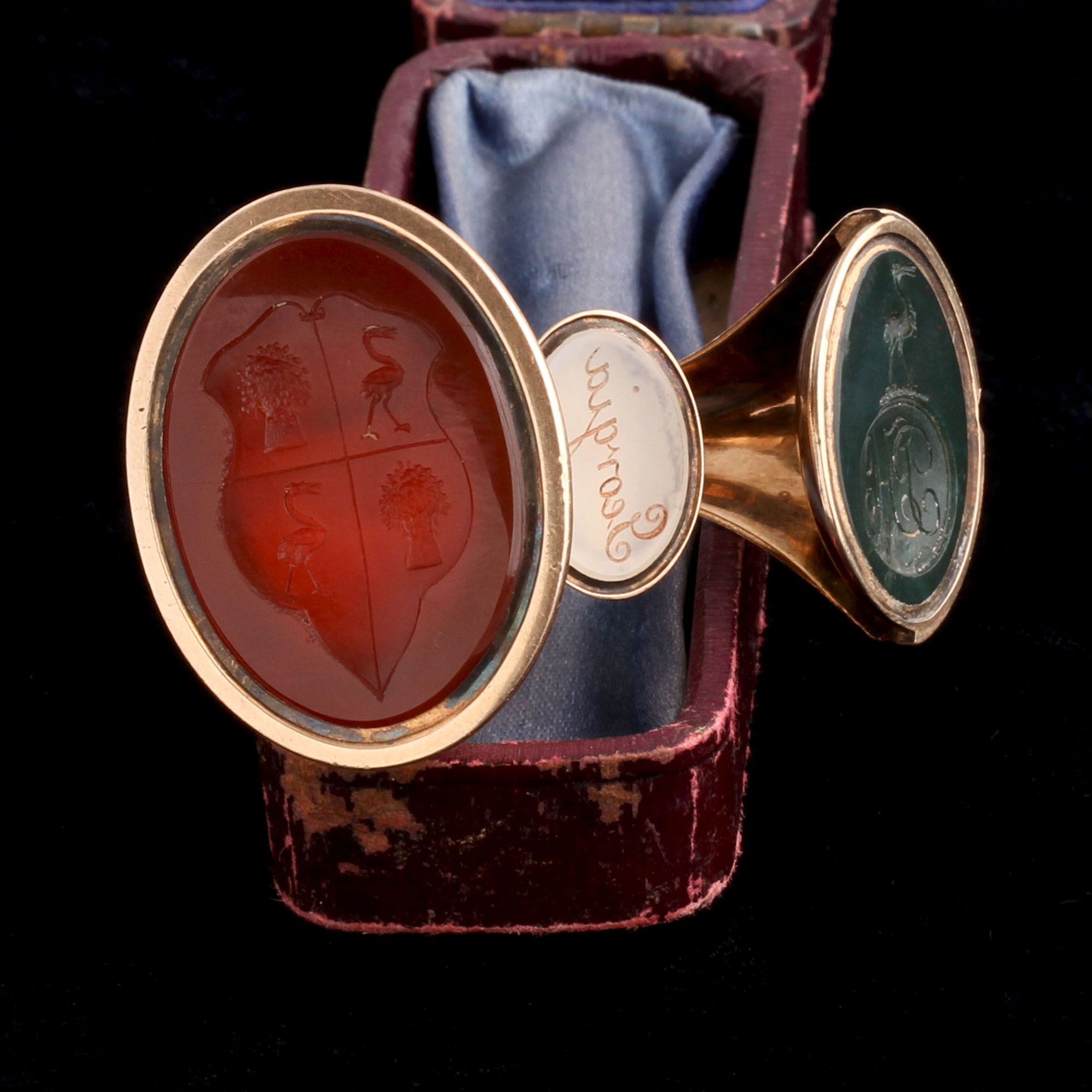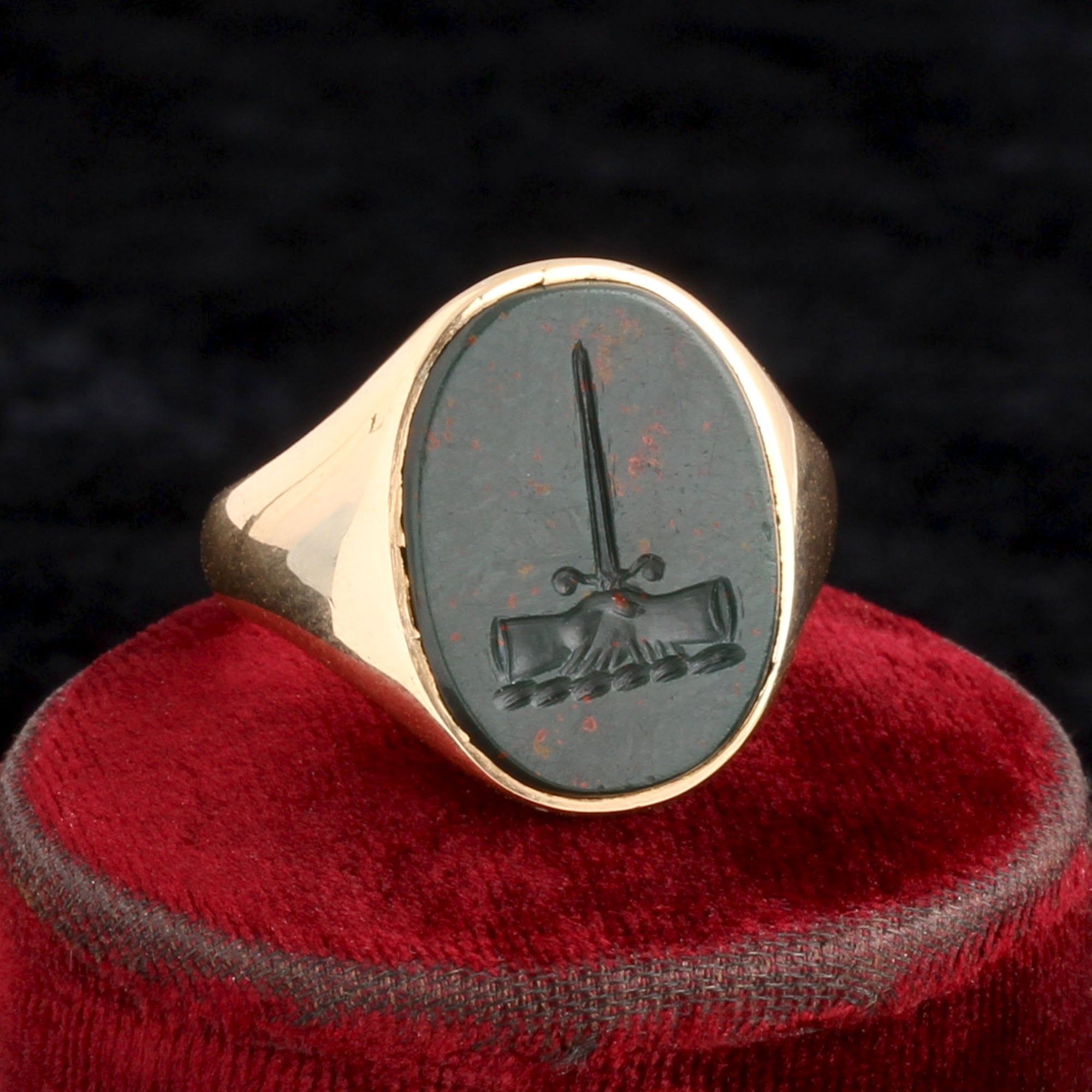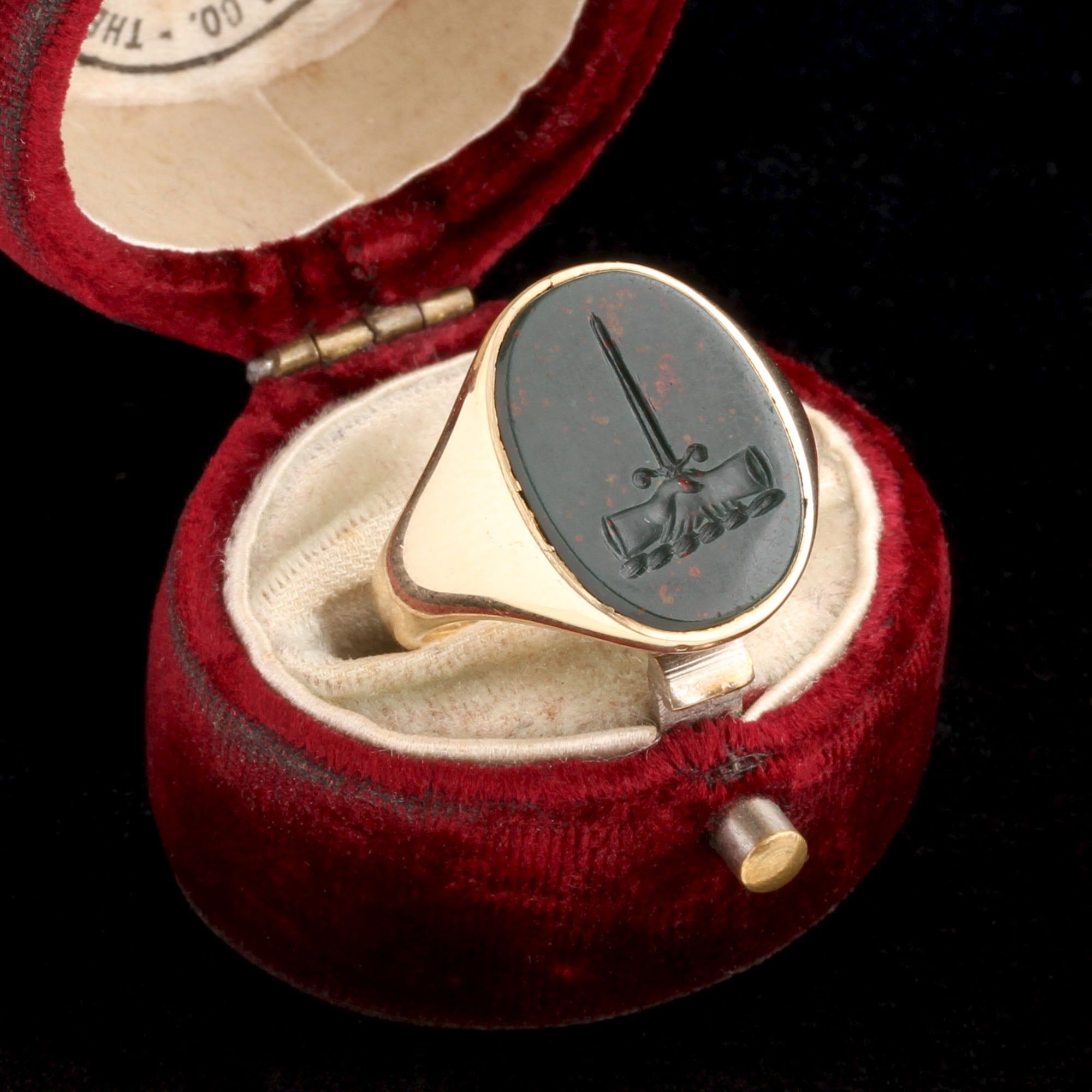Before passwords and Face ID, there were wax seals. The earliest seals can be traced back to Mesopotamia in 3500 BC. At a time when few could write (much less read), having a pictorial signature that could be impressed onto wax or clay was essential to authenticating documents.
Whenever we wish to remember something..., we hold this wax... and imprint them on it as we might stamp the impression of a seal ring. — Socrates (Theatatus, 191c)
Seals indicated both the veracity of a document (it was signed by the real person) and its security (they were hard to tamper with). Clay seals were even used on jars and containers just like plastic safety seals today.
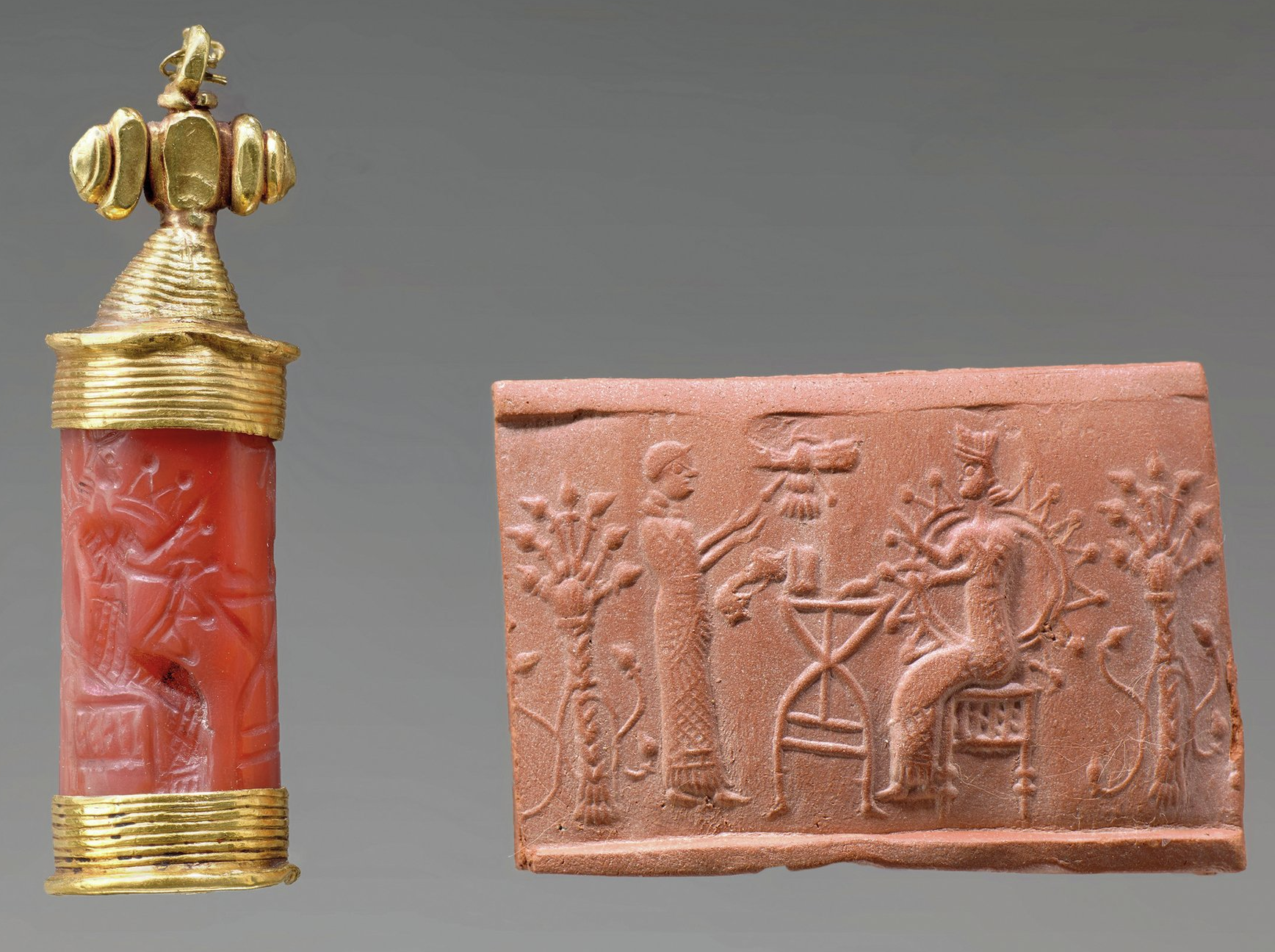
A Neo-Babylonian seal with a gold cap that allowed it to be...
A signet ring is a type of flat seal worn on the finger. The word "signet" comes from the Latin meaning "an identifying sign or mark." When Hannibal defeated the Romans, orders were given for all signet rings to be gathered from the dead Roman legionaries on the battlefield — not for their value, but as proof of the slaughter.

Scarab Finger Ring with the Names of Thutmose III and Hatshepsut, 1479–1458...

Scarab ring reverse showing the underside seal. It could be impressed onto...
Many of the scarab rings from Ancient Egypt are, in fact, signet rings. One could spin the scarab around and on the reverse side would be hieroglyphs identifying the owner. In Ancient Rome, they were sometimes used as a fortune telling device. The signets would all be tossed into a pile and one would be drawn and interpreted as an omen.
"Removing his signet ring from his hand, Pharaoh put it on Joseph's hand; he arrayed him in garments of fine linen, and put a gold chain around his neck." Genesis 41:42

Wearing a signet with his initials. Believed to be Gamaliell Pye, 1596....

Detail from Portrait of a Man with a Moor's Head on His...
Unlike so many vestiges of the Roman Empire that fell by the wayside in the Middle Ages (reclining while eating, rings on every finger, and pagan festivals, to name a few), the signet ring only gained popularity. In fact, beginning in 1200, a favorite source for signets were ancient gems discovered on Roman archeological sites.
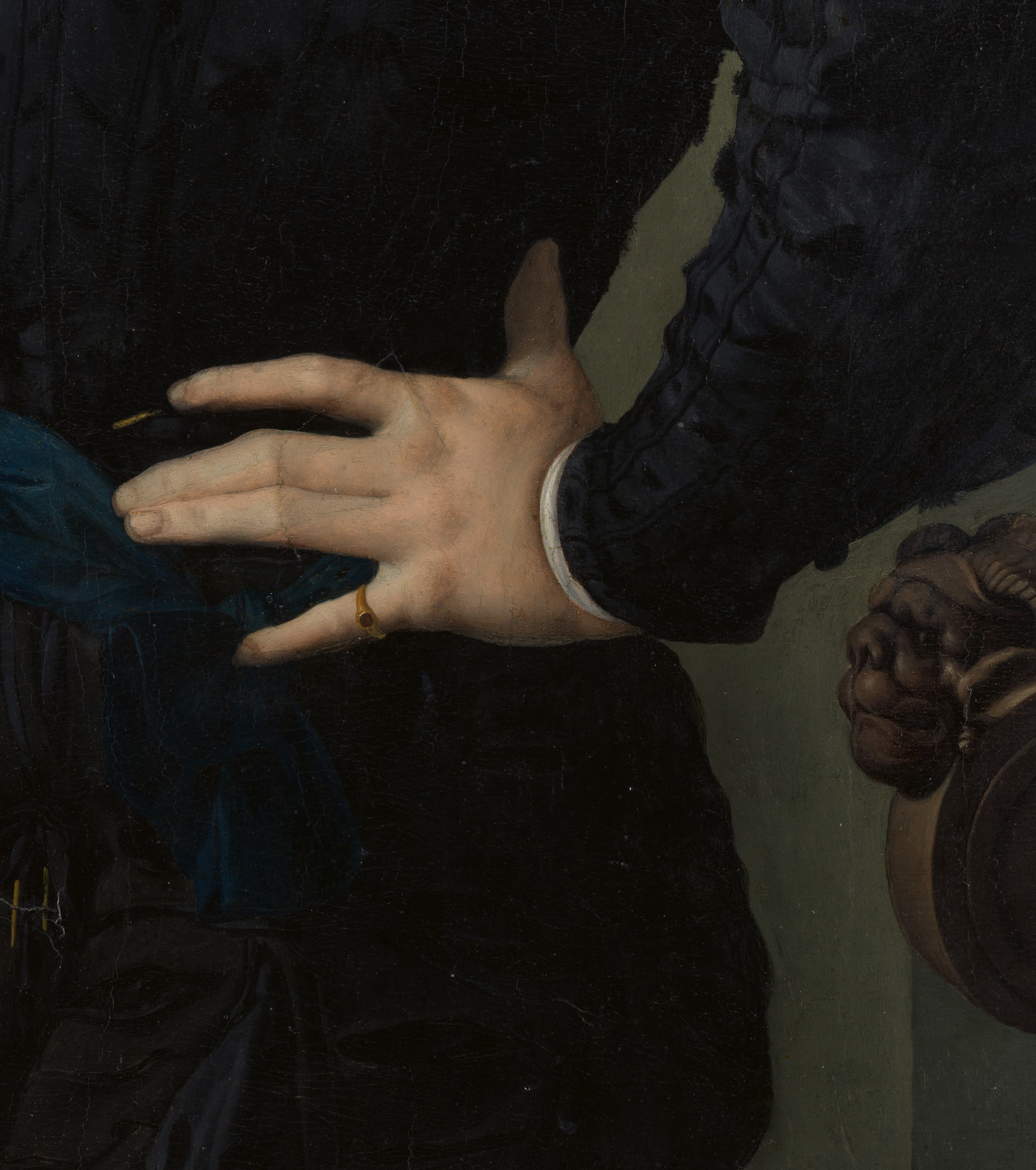
Detail from Portrait of a Young Man by Bronzino, 1530s.

Painted shortly after Eleanora married Cosimo I de'Medici in 1539. The large...
It was in the Middle Ages that a major signet ring innovation took hold: heraldic symbols. Heraldry, which is the use of inherited coats of arms and other symbols to show personal identity and family lineage, began on the mid-12th century CE battlefield as an easy means to identify medieval royalty and princes who were otherwise unrecognizable beneath their armor. Shields were a great place to display these pictorial ID's (think standing-up lions, the fleur-de-lis, eagle heads) which is why we still see shield-shaped outlines around coats of arms today.
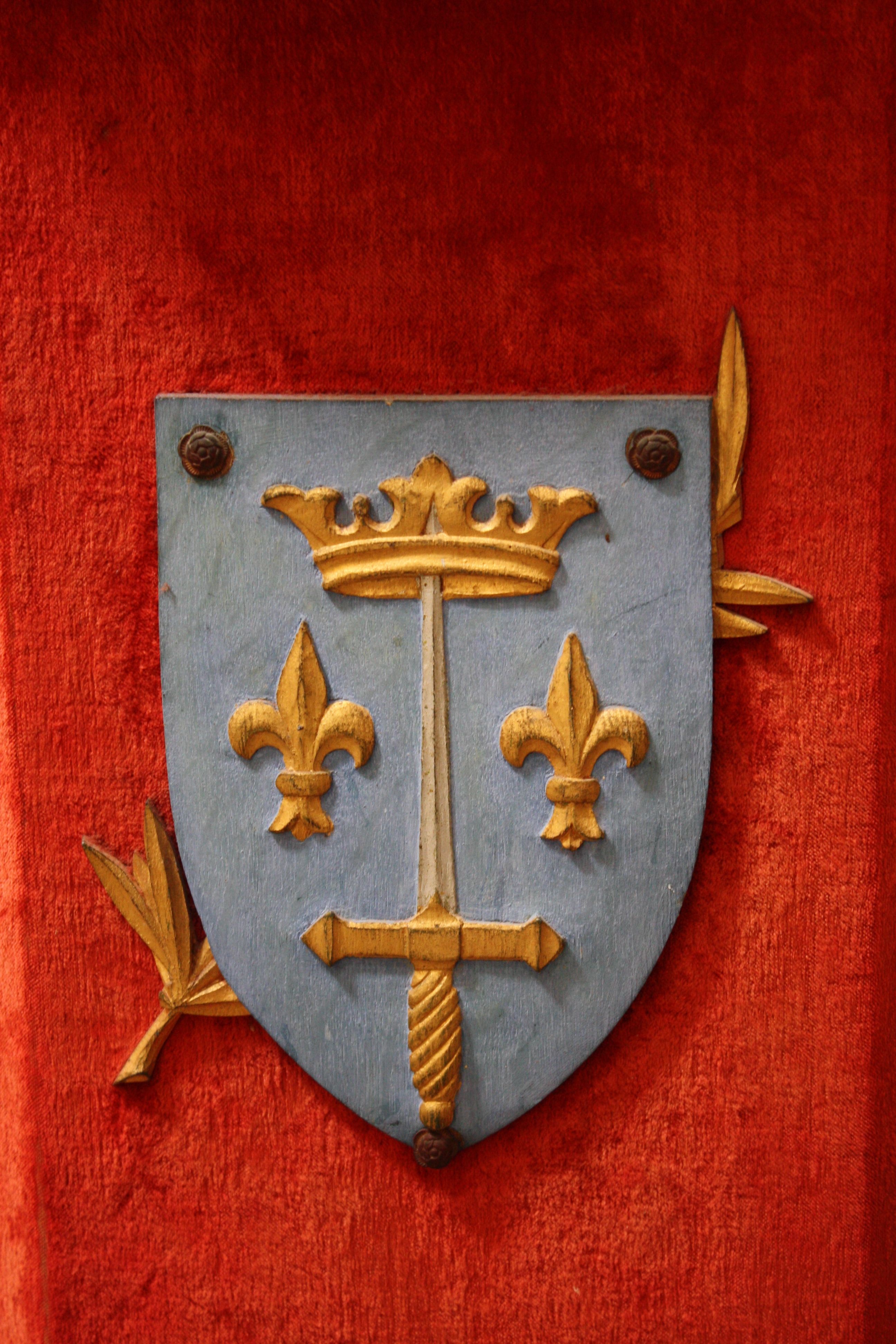
The coat of arms of Joan of Arc (c. 1412 - 1431...
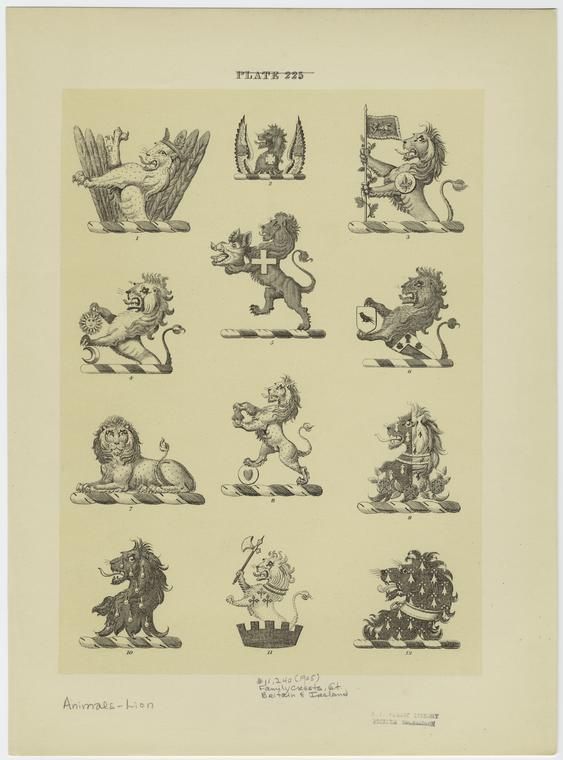
Plate from Fairbairn's Book of Crests of the Families of Great Britain...
By the 13th century, it wasn't just royals who had coats of arms. The practice spread to nobles and knights who took pride in bearing the colours and symbols of their family predecessors. Putting your crest on a signet ring let you show off your wealth and impressive lineage simultaneously. Even merchants flashed a signet: they often chose a symbol that matched the emblem they used to mark their goods. (Early logo, maybe?) Whether it was a family coat of arms or the symbol of your wares, a signet ring was all about showing the world who you were.
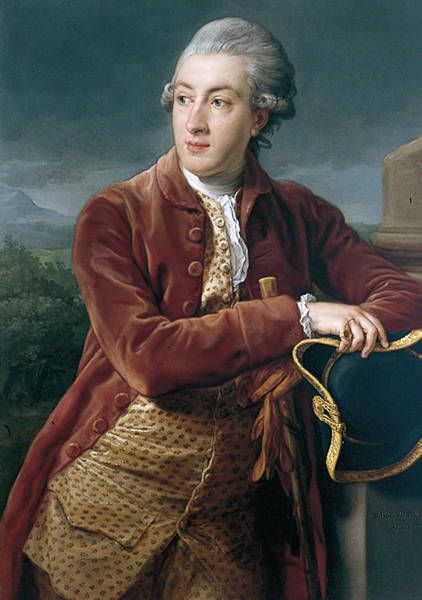
Painted while in Rome on his Grand Tour. The signet ring on...
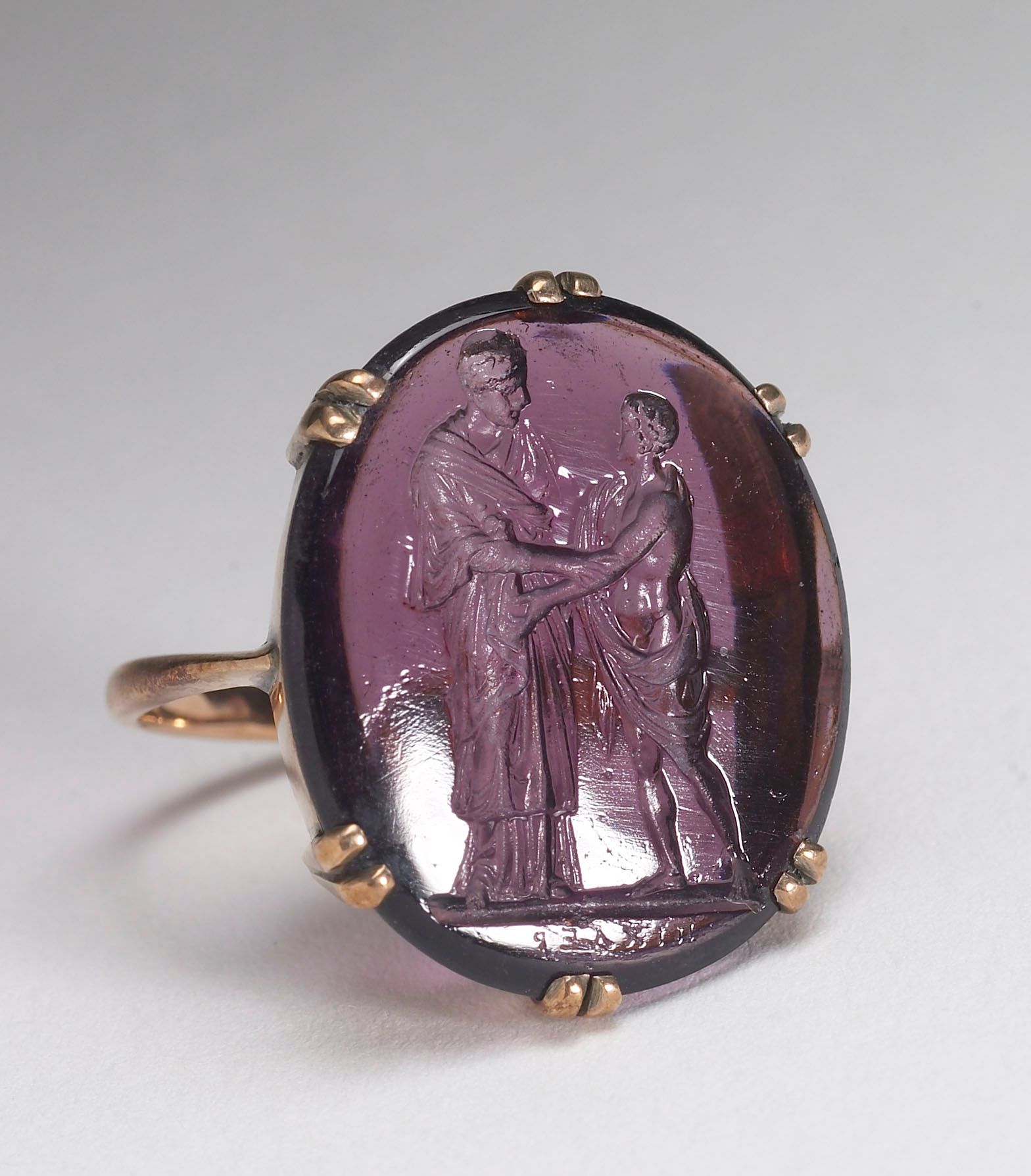
"Tassie" ring with glass paste intaglio of two figures in classical dress,...
In the 17th century, a signet ring (still preferably set with an ancient Roman intaglio) was just one of the souvenirs that young British men expected to pick up on their Grand Tour (maybe along with some Roman sculptures, grottoes or paintings). Chemist James Tassie developed a mass-produced alternative using a paste made in his own formula. These "Tassies" were often set in Roman-style mountings, satisfying the pubic's desire for the classical look (and making James Tassie a fortune in the process.)
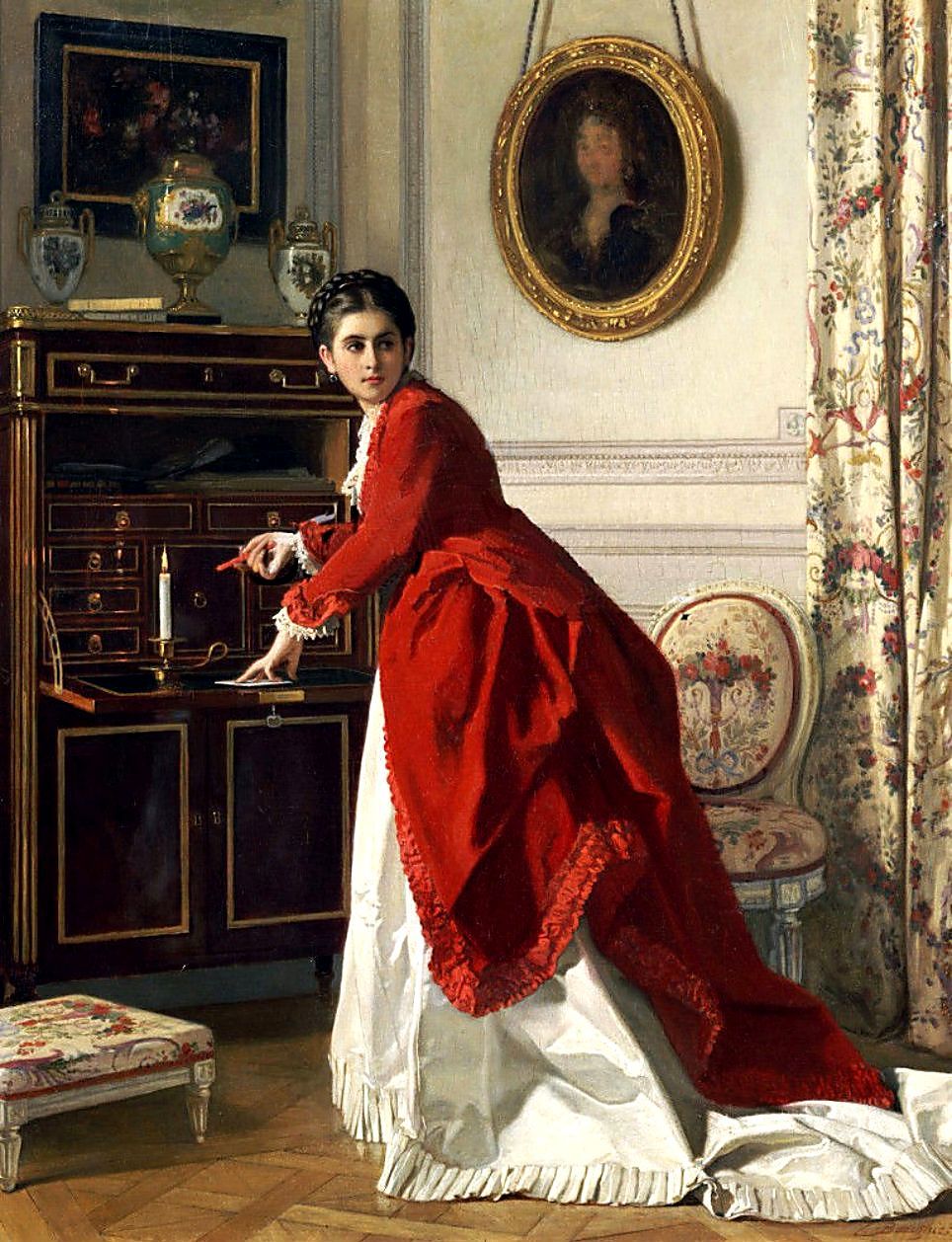
Woman melting red wax over a candle to seal a letter. The...

Note the watch fob in this detail from Portrait of Pierre-Jean-George Cabanis...
By the Victorian era, signet rings had remained the mark of a well-dressed gentleman. In this era of exploding literacy (and letter writing), people needed more options than sealing rings for keeping their private documents from prying eyes. For the dapper Victorian gentleman, a fob — basically a wax seal that would hang off his watch chain opposite to the watch — was a popular device to seal documents. Women also wore fobs, sometimes as a pendant or at the end of a chatelaine (which was a wearable kind of Swiss Army knife that consisted of a set of short chains attached to a woman's belt, all holding various household tools).
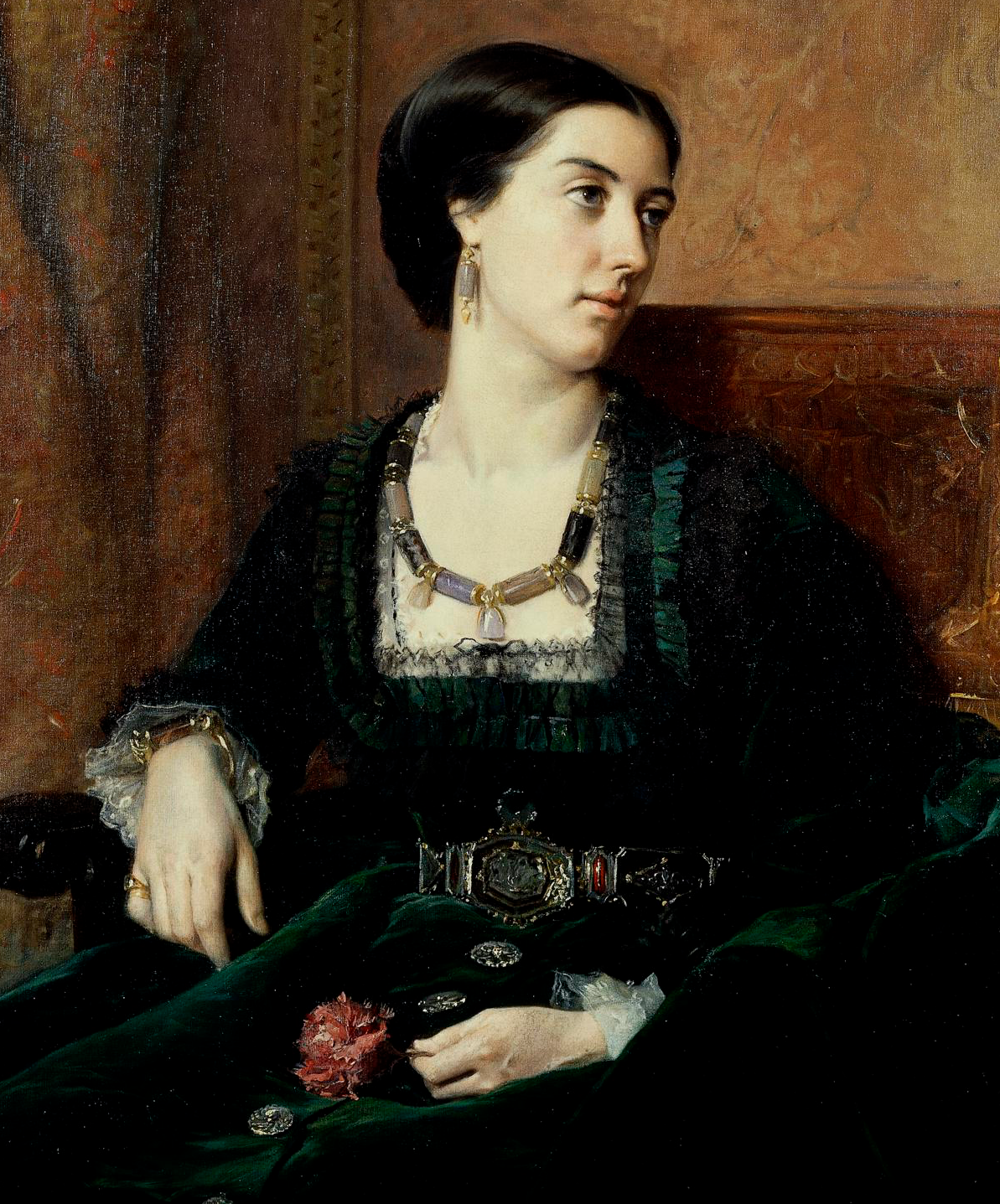
When she married her cousin, a distinguished Assyrian excavator, he gave her...
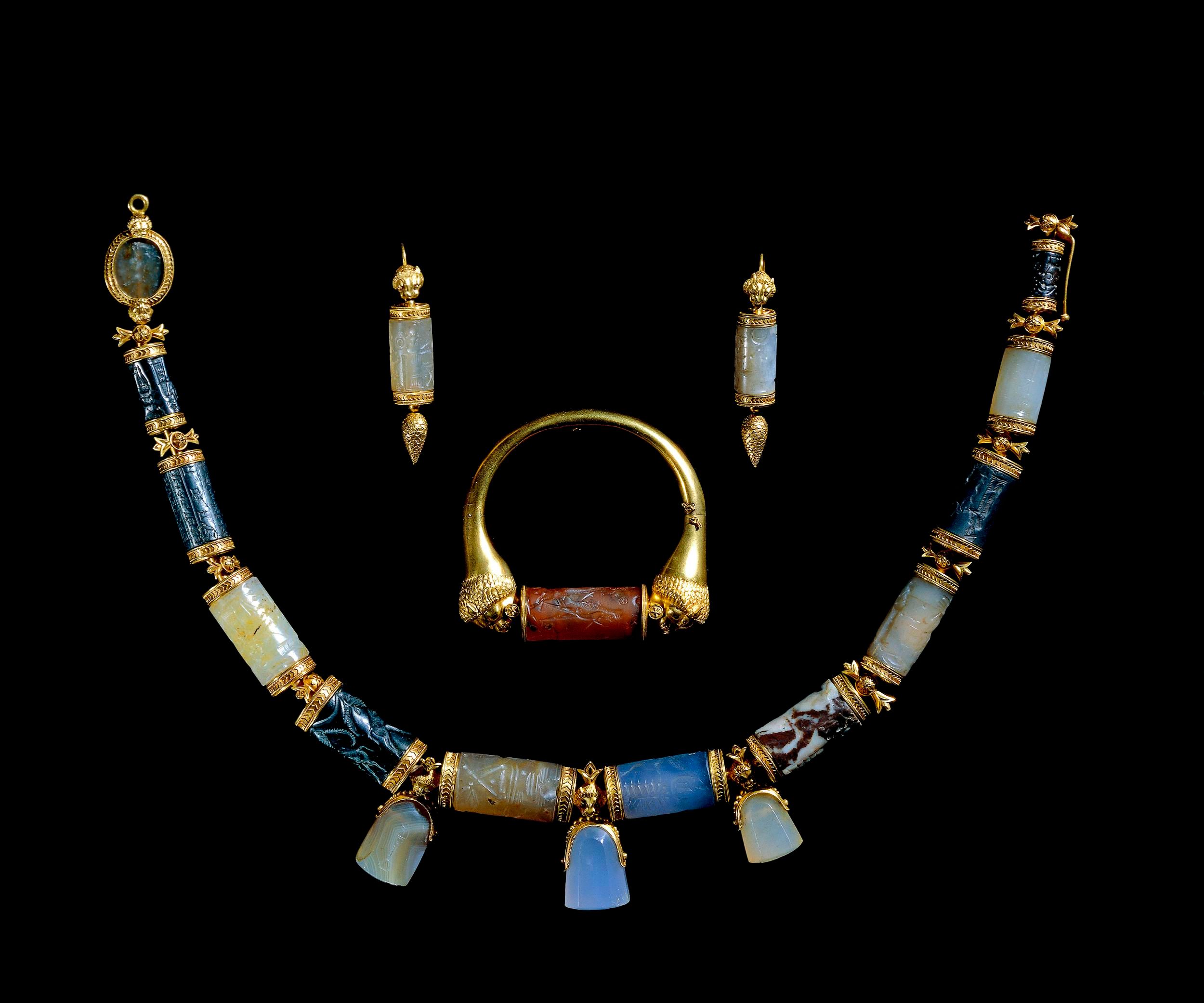
Lady Layard's jewelry, created in 1869. The British Museum.
At some point in the 20th century, wax as a sealing mechanism fell out of fashion, probably thanks to the universal use of pre-gummed envelope. So signet rings were no longer needed for a practical purpose, but they've remained in fashion. They are one of the few types of jewelry that has been accepted among masculine types, along with cufflinks and tie bars. Perhaps the medieval idea of identity and lineage still resonates with people today — above all, the signet ring calls to mind the chivalric traditions of the Middle Ages and the great families whose ancestry you might want to claim to be a part of.

Dickie Greenleaf wearing his signet ring in The Talented Mr. Ripley. Miramax/Everett...
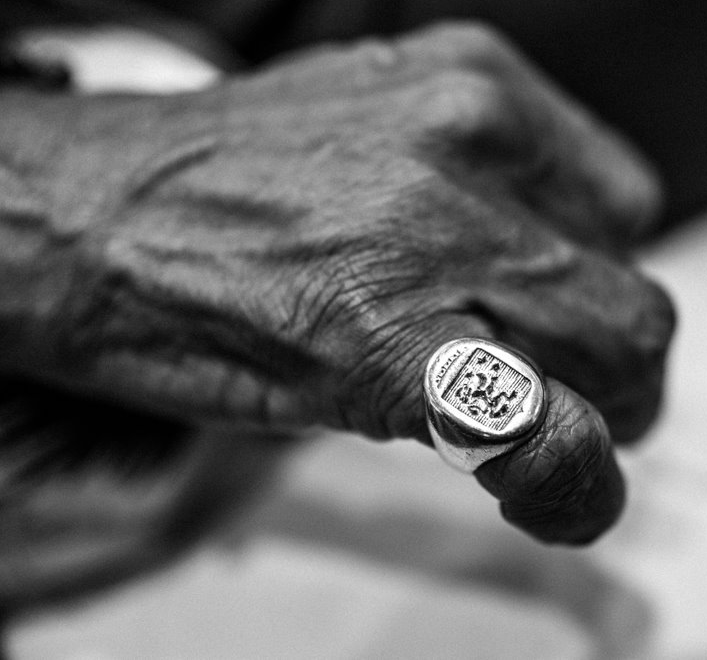
Frank Sinatra had a ring made with his Sicilian family crest. He...


